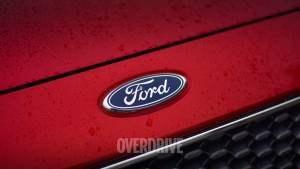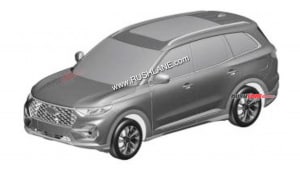India-bound 2015 Ford Endeavour first drive review
The affordable end of the market for a three-row or seven-seater SUV has fairly limited choices. Affordable isn't really the catch word here because these SUVs until now existed in the plus Rs 15 lakh bracket. But the full size SUV segment as we as we know it, at an entry point of around Rs 20 lakh, was dominated by Ford's Endeavour and GM's Chevrolet Captiva. Both these vehicles were quite outdated and we know upgrades are on their way.
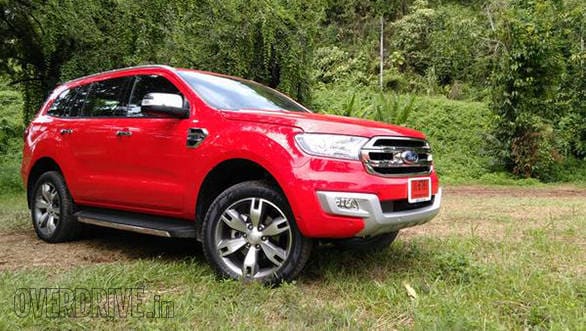
I've just driven the first of these which is the new Endeavour that's expected to be launched in India just around the festive season. It's also known as the Everest in the over-190 markets it retails in. India is the only country in that lot where, due to several legal issues with a certain spice-maker and some other brands, the name Everest cannot be used. Nonetheless, the existing Endeavour, which is roughly around three years past its sell-by date, is finally up for a change. The new Ford Endeavour, jointly developed by teams from Australia, South America and South East Asia, is an all-new product started off on a clean slate and with no past baggage.

The Endeavour is a handsome product - imposing, good looking and well tailored. It's certainly a significant change in design direction compared to the SUV it replaces. The lines aren't boxy or rigidly angular any longer. It's more curvy with softer edges and a contemporary silhouette. It's not attractive but it can and will grab attention, thanks to a strong frontpend design. The spec I drove in Thailand came with 20-inch (and I must add, very striking) alloy wheels and tyres which fill the wheel wells substantially, but expect smaller rim and tyre sizes for India, specifically the 18-inchers. This will, of course, drop the ground clearance marginally but cosmetically, the effects may be more adverse.
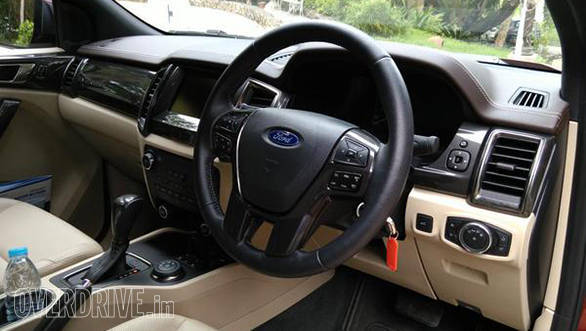
Inside the new Ford Endeavour is a very contemporary and handsome cabin. The dashboard, though sharply horizontal, has smooth rounded edges which makes it look soft but upmarket. The India-spec car will come with the two tone beige black interior which makes the cabin look even roomier than it already is. Build quality here in Thailand is quite impressive with tight shut lines and even gaps where visible. The dashboard is dominated by two elements, a scarlet laid out centre console and a good looking steering wheel.
The centre console is a three-layered unit, at the very top is the new and large infotainment touchscreen. It's quite intuitive and features Ford's proprietary second generation Sync system. Below that is the audio and climate control function and then the panel drops into a storage bin also housing aux and USB connectivity ports. On the transmission tunnel, northeast of the gear lever (manual or automatic) is placed Ford's new Terrain Management System. I will come back to explaining what that unit does but for now it is starkly similar to the unit found on Land Rover and Range Rover SUVs. The steering wheel on the other hand is a fairly busy component with several switches on the two arms that control various functions, audio and cruise control included. However, we aren't certain yet if cruise control will be offered to Indian customers which means you might just see some blank dies unless Ford has another steering wheel design for our market. The steering wheel, interestingly, can only be adjusted for height and not reach. The instrument cluster behind the steering wheel has a large multi-function display screen on the right edge that shows car system information. To its left is the speedometer and further left is another screen that displays entertainment and phone functions.
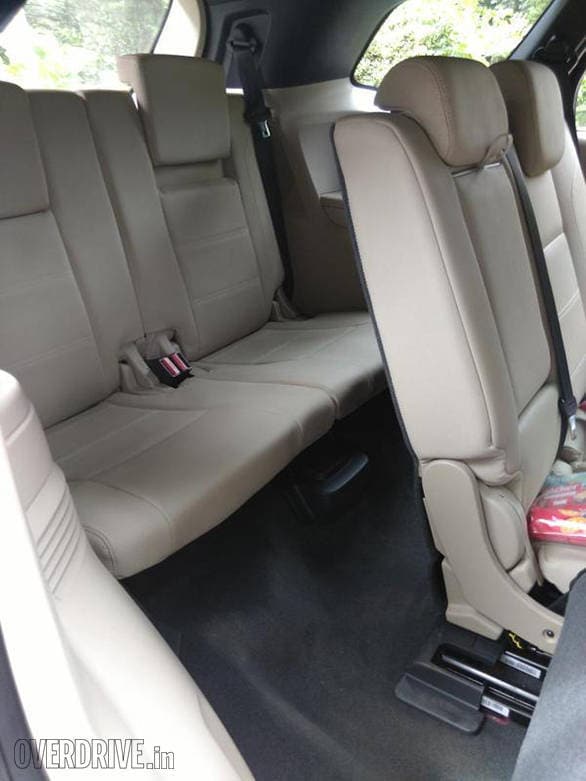
Coming to the interior space, there are three rows of seats and the first two are adjustable for reach and recline. The front seats are powered and height adjustable as well but the second row is manually adjustable. The third row cannot be adjusted but they are also electronically powered to fold down. With the third row folded up, there is limited space in the boot, but fold down that row and you get an enormous amount of space.
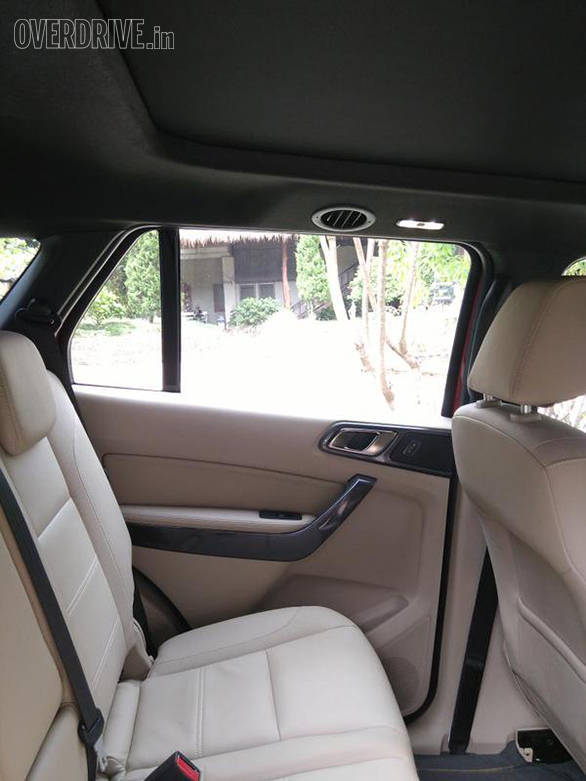
If you require more, the 60:40 split middle bench can further be folded flat to enhance that space. There are incidentally over thirty storage areas inside the Endeavour and almost all of them are very practically positioned. The rear tailgate is also a powered unit and can be raised or lowered at the touch of a button and India-spec cars will be getting this feature for sure. Entry points to the cabin or the boot are smartly managed - you have grab rails on the A-pillar which help ingress or egress.
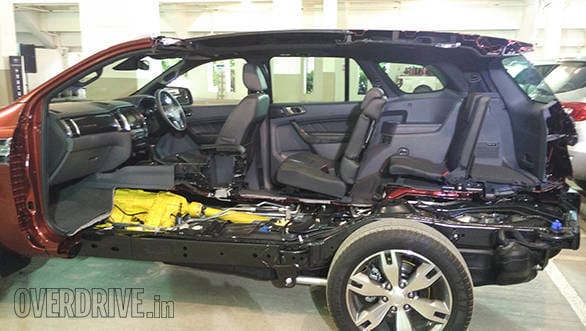
The boot, on the other hand, has no loading lip. It's a flat floor so you don't have to struggle with loading your stuff into that area. On the flip side, overpacking that area might result in something rolling out when you open the hatch, so be careful not to pack delicate stuff closer to the edge.
Ford will offer two engine options on the new Endeavour, a four-cylinder 2.2-litre turbo diesel and the inline five-cylinder 3.2-litre turbo diesel unit. Both engines come from the Duratorq family of engines and have been tuned to maximise fuel efficiency and NVH levels.
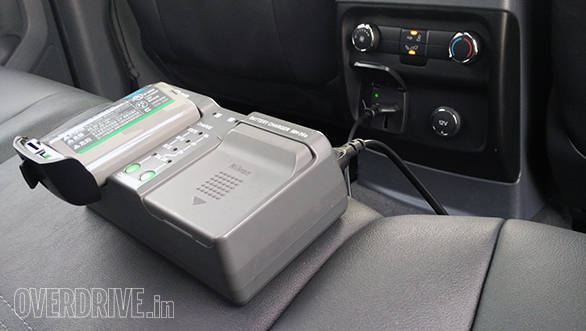
The 3.2-litre diesel is the flagship engine, since not only is it more powerful but it also gets the full luxury, comfort, convenience and off-road package. I presume in India the 3.2-litre Endeavour will be offered only as a Titanium variant which also comes with the Terrain Management System and the 6-speed auto transmission as standard. This engine has a peak power output of 200PS with 470Nm of max torque. It's a remarkably powerful engine and is ideally suited for off-road work and should appeal to that breed of enthusiasts. On the flip side though, refinement isn't of a very high order and neither does it feel very punchy in urban or highway conditions. In fact, it felt a bit laborious and wheezy to me in addition to lacking the kind of responsiveness that should have been characteristic of this engine. Even the 6-speed automatic feels like it lacks the will to work rapidly and kick downs are slow. It, in fact, feels quite similar to a CVT in operation until someone tells you it's a torque converter. You could elicit quicker responses from this transmission since it does adapt to driving inputs. Mashing the throttle will teach the ECU a new driving style but on this two-tonne behemoth, that sort of aggression feels a bit intimidating.
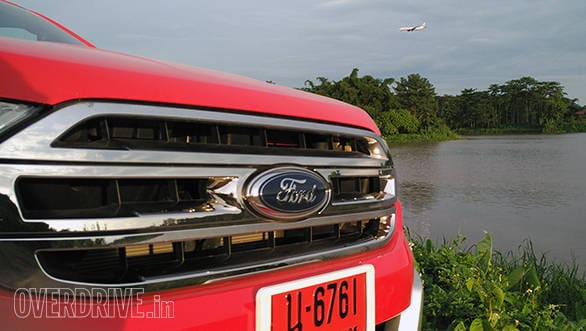
The gem in the new Endeavour is the 2.2-litre engine which feels much more refined and linear. Don't expect it to punch above its weight. Instead what you will appreciate is its smooth uncluttered approach to urban driving. Peak power is rated at 160PS but torque is a generous 385Nm. The torque curve seems more in sync with the ratios of the 6-speed auto but those wanting better efficiency figures can also opt for a 6-speed manual. This engine option does not get the Terrain Management System but you do get a decent array of off-road systems namely a low ratio transfer case, a locking diff and hill climb and descent systems.
Torque distribution between front and rear wheels on the new Ford Endeavour is ideally maintained in a 40:60 ratio respectively but up to 98 per cent torque can be delivered to either the front or rear wheels as the need arises. There is also a 4x2 power train (available with the 2.2-litre engine) in which the rear wheels alone are driven and the biggest benefit of this is for those looking for the best fuel efficiency.
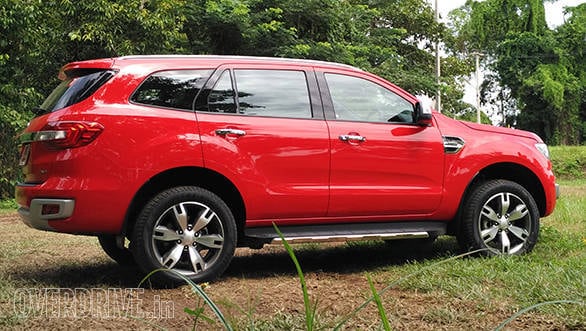
The off-road course we trundled through was fairly meek but I can confidently say there is a lot more that the Endeavour is capable of going through. The body-on-frame architecture along with the independent front suspension and a solid rear axle with shock absorbers mounted beyond the frame rails improves off-road stability. The new Endeavour is also capable of wading through 800mm deep water with a 29 degree approach angle and a 25 degree departure angle and a 225mm ground clearance. There is a substantial amount of punishment that the Endeavour will handle and its only limiting factor could be its enormous wheelbase and length which makes navigating through tight corners a bit sticky.
On the road, the new suspension articulation results in a smoother ride quality with very little vertical travel and pitch. There is a fair amount of body roll but it's tightly controlled thanks to a new addition to the rear suspension system called a Watts linkage. Its primary function is to maintain the solid axle's lateral position and it does this by allowing the up and down movement of the axle with minimal lateral movement. As a result what I experienced was tighter lines through corners with greater stability. Don't expect monocoque levels of stiffness and rigidity. What you do get, however, is an improved sense of precision and confidence compared to the previous generation Endeavour.
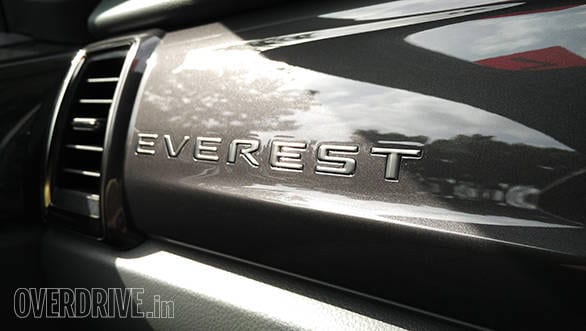
Ride quality is quite impressive too but rough potholed roads can sometimes be a bit uncomfortable, especially for rear seat passengers. I suspect that discomfort came about thanks to excessively inflated tyres though there was no way to verify the tyre pressures on our drive. A thorough examination of this aspect will be conducted when the vehicle comes to India (for sure).
There is also a ton of safety and luxury features on board and from what Nigel Harris, MD of Ford India claims, most of it will be available to customers in India. What may not be available are features like lane departure assist, adaptive cruise control and some other features that would raise the price to astronomical levels. Instead, expect things like powered seats, climate control with adjustable roof mounted blowers for all passengers, a 10-speaker audio system with active noise cancellation technology similar to what you get in state-of-the-art headphones to cancel ambient noise, active park assist that lets the vehicle park itself and several other luxury features. Safety does not take a backseat either - expect a full array of safety features like traction control, stability control, roll stability control, seven airbags, ABS with ESP and more. And then there is the off-road package.
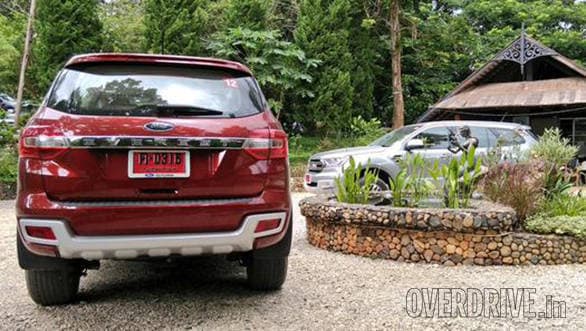
So the new Endeavour is definitely a new breed of vehicle. It's significantly better than the vehicle it replaces and is quite capable of taking the fight to its one lone competitor in this segment, the Toyota Fortuner. On the flip side, don't expect the price to be at the same level as the existing Endeavour. Instead expect to be charged a premium which I don't think may be fair but is justified for the level of luxury, safety and performance on offer. It's a good option for those with large families and an adventurous spirit. And my pick of the litter? The automatic 2.2-litre with 4x4.
Starts Rs 32.75 Lakhs
1996cc
Automatic
170
420
13.9 Kmpl
Starts Rs 29.98 Lakhs
2755cc
Automatic
166
500
-NA-
